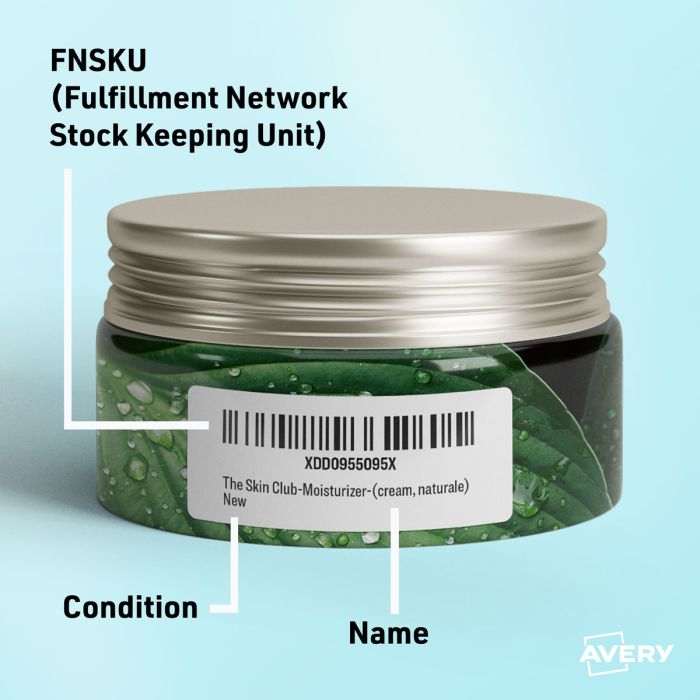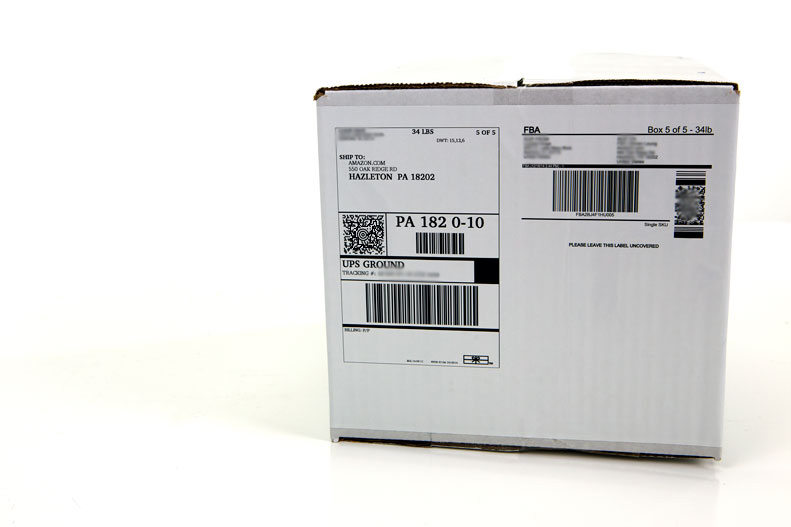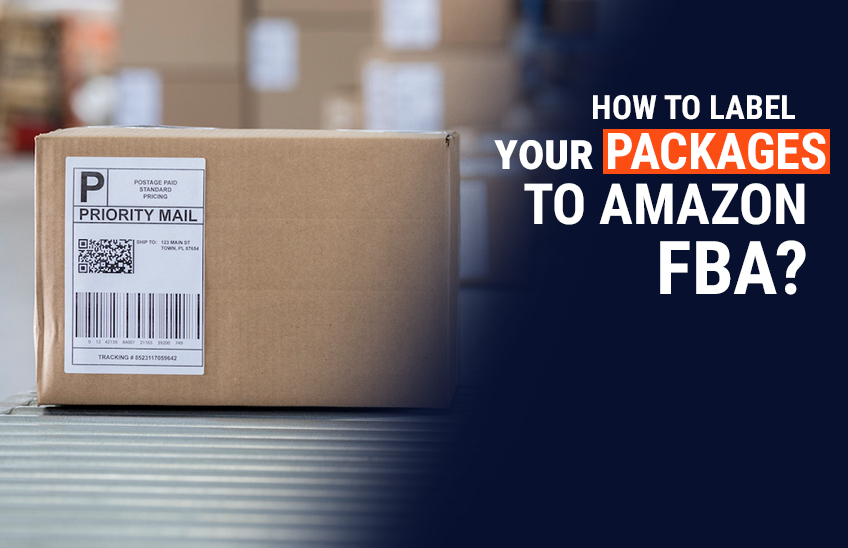Discover the secrets to mastering FBA label sizes and revolutionize your packaging game with this insightful blog post today!
Table of Contents
- Introduction to Amazon FBA and Labels
- Understanding Amazon FBA Label Sizes
- How to Print Labels for Amazon FBA
- Amazon FBA Labeling Requirements
- Correct Amazon FBA Label Placement
- Tips for Labeling Multiple Products
- Troubleshooting Common Labeling Issues
- Upgrading Your Labeling Process
- Wrapping Up: The Rewards of Proper Labeling
- Frequently Asked Questions (FAQs)
Introduction to Amazon FBA and Labels
We will start by briefly explaining what Amazon FBA is and why labels are important for sellers using this service. When you sell products on Amazon using FBA, or Fulfillment by Amazon, you store your products in Amazon’s fulfillment centers. Amazon takes care of packing, shipping, and customer service, allowing you to focus on growing your business. Labels play a crucial role in this process by ensuring that the right products are delivered to the right customers efficiently.
Now, let’s delve into the world of Amazon FBA label sizes and labeling requirements to help you navigate this aspect of your business smoothly.
Understanding Amazon FBA Label Sizes
When it comes to selling products through Amazon’s Fulfilled by Amazon (FBA) program, using the right label sizes is crucial. Let’s dive into the specifics of Amazon FBA label sizes and why they are so important.
Standard Label Sizes
Amazon FBA label sizes typically adhere to standard dimensions to ensure consistency across products. These dimensions are carefully chosen to fit various packaging types while still being easily scannable by Amazon’s system.
Why Size Matters
The size of your FBA label matters because it directly impacts the efficiency of Amazon’s fulfillment process. Using the correct label size ensures that the barcode and other essential information can be scanned accurately, reducing the chances of errors and delays in shipping your products.
How to Print Labels for Amazon FBA
In this section, we’ll guide readers through the process of printing their own labels for FBA products, making sure they meet Amazon’s requirements.

Image courtesy of www.avery.com via Google Images
Using Home Printers
If you’re just starting out, you can use a regular home printer to create your FBA labels. Make sure to adjust the settings to the correct label size before printing. It’s important to use high-quality label paper to ensure the labels are clear and easy to scan.
Choosing the Best Thermal Printer for FBA
To streamline your labeling process and ensure professional-looking labels, consider investing in a thermal printer. These printers are efficient, produce high-quality labels, and are compatible with various label sizes used by Amazon FBA.
Steps to Print Labels
1. Begin by logging into your Amazon Seller Central account and navigating to the Inventory tab.
2. Select the products you want to create labels for and click on the option to print labels.
3. Follow the on-screen instructions to choose the label size, format, and quantity.
4. Once you have all the settings adjusted, click on the print button to generate your labels.
5. Make sure to affix the labels securely on your products according to Amazon’s guidelines.
Amazon FBA Labeling Requirements
In order to successfully sell products through Amazon FBA, sellers must adhere to specific guidelines when creating and applying labels. Let’s delve into the essential requirements to ensure your products are compliant and ready for shipment.
Label Content
Amazon FBA labeling requires that certain information be included on the label for each product. This typically includes the product name, barcode, ASIN (Amazon Standard Identification Number), and any other relevant product identifiers. Ensuring all necessary information is clearly visible on the label is crucial for smooth processing and identification of your products within Amazon’s warehouse.
Quality and Readability
Labels for Amazon FBA must meet specific quality standards to guarantee readability and scanning accuracy. It’s essential that labels are printed clearly and sharply, without smudges or fading, to ensure they can be scanned accurately throughout the fulfillment process. Amazon has strict requirements for label quality to maintain efficient operations and prevent errors in inventory management.
Correct Amazon FBA Label Placement
When it comes to selling products through Amazon FBA, getting the label placement right is crucial. The placement of these labels on your products ensures smooth processing and delivery to customers. Let’s delve into the importance of correctly positioning your FBA labels.

Image courtesy of www.mikevestil.com via Google Images
Where to Stick the Label
The Amazon FBA label should be affixed to a flat surface on your product, free of any obstructions such as seams, folds, or curves. The ideal location for the label is typically the top of the main display side of the item. This is to ensure that it is easily visible and scan-ready for efficient processing at Amazon’s fulfillment centers.
Common Mistakes to Avoid
One common mistake that sellers often make is placing the label on a surface with uneven texture or a barcode that’s difficult to scan, leading to processing delays. It’s also important to ensure that the label is securely attached to the product and won’t fall off during handling or shipping.
Another error to watch out for is covering important product information with the label, such as product names or warnings. This can lead to customer dissatisfaction or even compliance issues. Be sure to leave ample space around the label to avoid any overlapping with essential product details.
Tips for Labeling Multiple Products
When dealing with a large number of different products, it’s essential to establish a system for organizing your labels. One effective strategy is to create a spreadsheet or database where you can easily track which labels correspond to each item. Assigning unique codes or numbers to each product can help streamline the labeling process and prevent mix-ups.
| Size | Dimensions | Recommended Use |
|---|---|---|
| Small | 2″ x 1″ | Suitable for small packages or products |
| Medium | 3″ x 2″ | For average-sized items or packages |
| Large | 4″ x 3″ | Ideal for larger packages or products |
Bulk Labeling Techniques
For sellers with a high volume of inventory, bulk labeling techniques can save you time and ensure accuracy. Consider investing in a label printer that can handle batch printing to expedite the process. Grouping similar products together and labeling them in batches can also streamline your operations and minimize errors.
Troubleshooting Common Labeling Issues
If you’re facing issues with your printer while trying to print labels for Amazon FBA, don’t worry! Start by checking the printer’s connection to your computer or device. Make sure it’s properly plugged in and turned on. If the printer still isn’t working, try restarting both the printer and your device. Sometimes, a simple reboot can solve the problem and get your labels printing smoothly.

Image courtesy of www.onlinelabels.com via Google Images
Incorrect Label Size
Using the wrong label size for your Amazon FBA products can lead to a host of problems. If you find yourself in this situation, it’s essential to rectify the issue immediately. Check the dimensions of the label required by Amazon and compare them to the ones you’ve been using. If they don’t match, stop using the incorrect labels and switch to the proper size right away. Using the correct label size ensures that your products are processed efficiently and accurately by Amazon.
Upgrading Your Labeling Process
When it comes to running a successful Amazon FBA business, having an efficient labeling process is key. Here are some tips to enhance your labeling process for better efficiency and compliance.
Investing in Quality Equipment
One of the best ways to upgrade your labeling process is to invest in top-tier equipment, such as a high-quality thermal printer. A good thermal printer can significantly improve the speed and accuracy of label printing, ensuring that your products are labeled correctly every time. Look for a printer that is compatible with Amazon FBA label sizes and can produce clear, professional-looking labels.
Software Solutions
In addition to upgrading your hardware, using the right software can also streamline your labeling process. There are various programs and tools available that can help you create, customize, and print FBA labels efficiently. These software solutions can automate the labeling process, saving you time and reducing the risk of errors. Consider exploring different software options to find one that best fits your labeling needs.
Wrapping Up: The Rewards of Proper Labeling
In this blog post, we have explored the essential aspects of labeling for Amazon FBA, focusing on the correct label sizes and the significance of adhering to labeling requirements. Proper labeling is more than just a routine task; it plays a vital role in the success of your business on Amazon. Let’s take a moment to appreciate the rewards of meticulous labeling.

Image courtesy of www.enablers.org via Google Images
The Impact of Correct Label Sizes
Using the right Amazon FBA label size ensures that your products are processed efficiently and accurately. When your labels fit perfectly on the designated area, it enables Amazon’s systems to scan and locate your items swiftly. This leads to quicker processing times, faster shipments, and ultimately, happier customers receiving their orders promptly.
Compliance with Labeling Requirements
By following Amazon’s labeling requirements diligently, you demonstrate professionalism and trustworthiness as a seller. Your products stand out for their clear and concise labeling, instilling confidence in buyers and enhancing your brand reputation. Compliant labeling also reduces the likelihood of errors or delays in the fulfillment process, contributing to a smoother operation overall.
The Value of Proper Labeling
When you prioritize proper labeling for your Amazon FBA inventory, you are setting the stage for success. Efficient labeling leads to increased operational efficiency, fewer errors, and improved customer satisfaction. By investing time and effort into this fundamental aspect of your business, you are laying a strong foundation for growth and profitability.
Frequently Asked Questions (FAQs)
In our last section, we’ll answer common questions readers might have about FBA labels.
What if my labels keep getting rejected by Amazon?
If your labels are repeatedly getting rejected by Amazon, it’s essential to double-check that they meet all of Amazon’s labeling requirements. Make sure the label size is correct, the information is clear and legible, and the label is placed in the designated area on the product. If you’re still facing issues, consider seeking guidance from Amazon Seller Support for further assistance in resolving the problem.
Can I use colorful labels for FBA?
When it comes to labeling products for Amazon FBA, it’s best to stick to standard black and white labels. Using colorful labels might not align with Amazon’s guidelines and could potentially cause confusion during the fulfillment process. To ensure smooth processing and delivery of your products, it’s recommended to follow Amazon’s requirements by using clear, easy-to-read labels without any unnecessary colors or designs.
